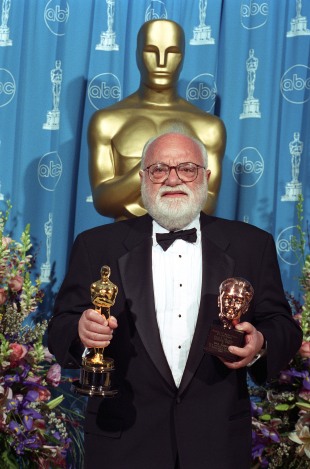Pete Hammond is Deadline’s awards columnist. This article appeared in the Feb. 13 issue of AwardsLine.
This year the big question hasn’t been exactly who Academy of Motion Picture Arts and Sciences members are going to vote for, it has been instead whether they can figure out how to vote at all.
With the advent of online voting for the first time in Academy history, the path during the nomination balloting hasn’t been a smooth one for many voters. Some found that the Academy’s security steps, necessary to avoid hackers, have also kept voters out, forcing them to make repeated attempts at getting their ballot completed.
 Although all the guilds and other voting groups have moved full force into the world of online voting, the Academy went through a slow, methodical process before finally settling on Everyone Counts, a company known for working with the U.S. government in a similar capacity. Unlike most industry groups, the Academy is a prime target for infiltration by cyber terrorists who would like nothing more than to gain access to vote totals and embarrass the high-profile Oscar process, which in 85 years has never been compromised.
Although all the guilds and other voting groups have moved full force into the world of online voting, the Academy went through a slow, methodical process before finally settling on Everyone Counts, a company known for working with the U.S. government in a similar capacity. Unlike most industry groups, the Academy is a prime target for infiltration by cyber terrorists who would like nothing more than to gain access to vote totals and embarrass the high-profile Oscar process, which in 85 years has never been compromised.
But keeping voting hacker-proof caused its own set of issues, when in November the Academy had to extend its registration period after member complaints. After that, AMPAS also backed down and agreed to send an old-fashioned paper ballot to any member who had paid their dues but hadn’t bothered or didn’t know how to register for online voting. All along, the Academy offered paper ballots as an alternative but initially had required a one-time registration for those as well—something longtime members used to getting ballots in the mail automatically didn’t realize.
Many voters said they were able to vote online with no problems, but a large and very vocal group complained that they were locked out of the system and had to spend valuable time trying to vote over the course of two or three days.
Although the Academy sent out repeated email reminders, provided a ’round-the-clock phone number for member support, and set up kiosks in the lobby of its Beverly Hills headquarters, some members experienced great frustration. However, as president Hawk Koch told me on the morning of the Oscar nominations, the turnout was still the largest the Academy had seen for nominations in several years. But he also said nothing was perfect on a first try. And before final voting began on Feb. 8 (ballots are due back on Feb. 19), the Academy sent members a detailed—some might say too complex—guidebook on how to accomplish online voting. The Academy also sent out emails offering the option of a paper ballot to anyone who wants one. From my admittedly nonscientific sample survey, a lot of members took them up on the offer by the deadline of Feb. 1.
For those determined to enter the brave new world of electronic Oscar voting, the Academy told them they will need four things: 1) A voter identification number; 2) A voting password (not to be confused with their member password and one that must contain a mix of letters, numbers, and a special character); 3) A security code; and 4) A telephone where voters will receive their special code by text after entering their VIN and password.
The Academy’s E Voter Guide then takes the voter step by step into how to actually cast their ballot once they have successfully logged into the system in the first place. Some members told me it took them two or three tries after getting locked out for a 24-hour period to actually finish the task during nominations. If you try a password too many times, and it doesn’t work, you have to call the Academy support line to get a new one.
Certainly Academy officials, who took great care before embarking on this new adventure for Oscar, are hoping this will get easier with time. It took the Screen Actors Guild seven years before they were comfortable that it was running smoothly enough to eliminate paper ballots. The Academy is dealing with a membership that might not be so tech savvy. But for an organization that is such a tempting target for hackers, it is not an easy task, and the option of paper ballots will probably be around for a long time. “Please tell them, just send me a paper ballot. I’m begging,” one Oscar-nominated longtime member told me.
The bottom line is, if you want to vote, you will be able to vote. “What I can say is, we will not jeopardize the integrity of the Oscar ballot. We will make sure that everybody can vote,” Koch told me.







